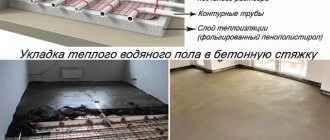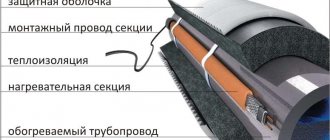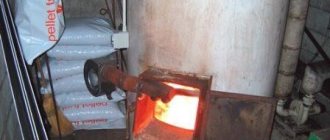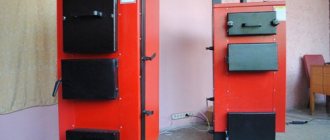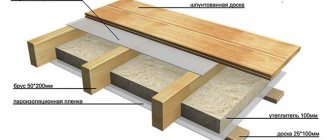In order for the boiler to serve for a long time, it must be cleaned regularly. Cleaning, or as it is also called, washing the heat exchanger of a single-circuit or double-circuit gas boiler at home can be done using chemical or mechanical methods. Such cleaning is necessary in order to remove all internal deposits that can destroy the metal, and this will lead to disruption of the thermal process in the heating system itself. Then a problem will arise such as the supply of hot water to the main heating system - DHW. Therefore, prevention of scale and other deposits is carried out regularly.
When you need to clean a gas boiler: negative aspects
Gas boilers are currently becoming very popular and are in great demand. This is because such a device is very efficient and economical, and it can heat not only country houses, but also apartments. But in order for such a unit to work stably, without any interruptions, it needs to be regularly maintained.
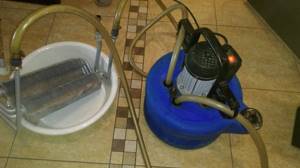
You can clean your gas boiler yourself or use the services of professionals.
A double-circuit boiler can be cleaned in two stages. The first of these is mechanical cleaning of soot from all external surfaces of parts and chimneys. The second stage is chemical washing of all parts from scale.
A double-circuit boiler needs to be cleaned more often than a single-circuit boiler, since mineral deposits accumulate on its walls more actively. Why do we need to clean the boiler, and what signs can indicate this to us?
Signs indicating cleaning of the AOGV or AGV boiler:
- Insufficient traction;
- The burner burns poorly or does not ignite at all;
- Less heat transfer;
- The boiler gains temperature very slowly;
- Looking through the viewing window, we found traces of soot.
You can flush any type of boiler yourself or go to a special workshop, where they will do everything carefully and correctly for you in a matter of hours. If cleaning does not help to cope with the above problems, then you need to repair the boiler.
Other models
In practice, cleaning burners follows the same principles. The differences lie in their removal and reassembly.
The following examples are provided:
For example, the Helios AOGV 4 parapet apparatus is equipped with Eurosvit 360 automation and burners of the European brands Bray and Polidoro.
The burner set is removed following the example of the Zhitomir process. A pump is used to clean the nozzle, and hard brushes are used to clean the surfaces.
The Conord line stands out in particular.
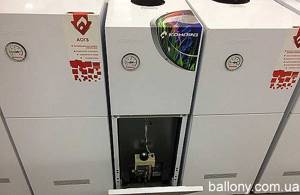
The automation variations here are:
The most popular is the second variation:
It includes a sectional burner, Polidoro tubes, igniter, thermocouple, gas valve, temperature indicator and wires.
A similar system is available in the Lemax Premium 12.5 model.

Only the burner here is micro-flare. The mechanism is very easily removed by removing the top cover and lightly unscrewing the fixing bolts.
Its analogues are also found in the Siberia models.
Ecological burners "Vorgas" are used here.
Does not lag behind in this regard. Here its models Novella Maxima 108 N RAI and Mynute Boiler stand out.
Honeywell automation looks like this:

It has a similar operating principle to the Eurosvit system. The differences lie in the materials of some components.
It is often found in wall-mounted modifications, for example in Baksi Fortech 24
It also has an ecological burner that leaves no combustion products.
An equally popular device is the Ariston ALTEAS X 24 FF NG.

Many Daewoo models operate with similar automation. For example – DGB 200 MSC.
Whatever model or brand you have, strictly follow the suggested instructions for removing and financial assistance grants for reinstalling the burner unit. Clean it thoroughly with the right products 1-2 times a year. Maintain other mechanisms as well. And then your boiler will work properly for a long period.
An indispensable attribute of any heating system is a boiler, which acts as a heat generator for heating the home.
The modern heating equipment market is saturated with a very wide range of boiler units of various types. But a special place in this range is occupied by gas boilers, which are becoming more and more popular every day.
This trend is due to the fact that units of this type are very effective and economical devices for heating a country house or even an apartment. In order for a gas boiler to function smoothly and stably, it is necessary to properly care for it.
One type of such maintenance is cleaning the gas boiler from soot and other contaminants. Let's talk in more detail about why to clean a gas unit, as well as in what ways this can be done.
How to clean a gas boiler: some nuances
Before you begin the process of cleaning a gas boiler, you first need to find out what parts will be involved in this. You will definitely need to clean: the gas filter, the burner with nozzles, the jet, the igniter, the firebox and the chimney. Each of these parts needs to be cleaned in a specific manner.
Scale can accumulate in the passages of the heat exchanger, but soot appears in the chimney and other smoke exhaust channels. It follows from this: in order for the boiler to operate without interruption, it is necessary to clean not only the main heat exchanger, but also all existing smoke channels, the flue, and the burner along with it.
When starting to clean a gas boiler, you need to know and take into account some nuances, without which high-quality work will not be possible. You need to know them in order to do everything correctly in the future, without any mistakes.
Nuances you need to know:
- When flushing the boiler, you need to make sure that it is disconnected from gas, water and electricity;
- When dismantling the heat exchanger, under no circumstances should the special sealing elements be damaged;
- The heat exchanger must be cleaned very carefully so as not to damage its thin tubes;
- It is imperative to check the tightness of all connections;
- All kinds of stabilizers must be added to aggressive solutions to protect metal parts.
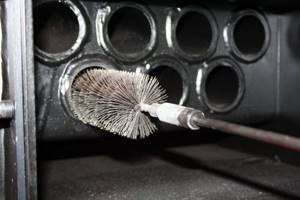
You can clean the boiler using a special brush.
Before you start cleaning a gas boiler from any company: Baxi, Aton or Vaillant, you must first disassemble the boiler so that you can get to each of the parts that we need. Disassembling the boiler is not at all difficult if you know its structure. You can do this yourself by reading the instructions carefully before doing so.
Features of cleaning boilers of different brands
Depending on the manufacturer of the water heating equipment, cleaning may have a number of nuances that must be taken into account. Let's look at the most common brands.
Baxi
The main feature of Baksi boilers is the presence of a secondary plate heat exchanger. This is worth considering when choosing a cleaning product.
Navien
A South Korean manufacturer that produces water heating products adapted to Russian conditions. When washing it, no problems arise, since the system has increased stability and reliability.
Ariston
Ariston equipment is equipped with additional water purification filters, which is why the water entering the system is cleaner than usual. This allows you to go without cleaning for a long time and use gentle options when choosing chemicals.
Vaillant
The operating temperature recommended by the manufacturer is within 40-50 o. If you follow this, scale will accumulate in the heat exchanger more slowly.
Beretta
A high-quality manufacturer that adapts its products to Russian realities. Does not have any special features during cleaning. It is carried out by analogy with most similar products.
Arderia
Another brand from South Korea, equipped with two heat exchangers. If the product does not operate correctly, it is advisable to clean both parts.
Step-by-step instructions on how to clean the igniter for a gas boiler
If the pilot light's flame is cone-shaped and bright blue in color, then we can conclude that this is normal operation. But if the fire has already acquired a yellow or orange tint, then this indicates that the igniter needs to be cleaned. You can clean the igniter yourself, but disassembling the entire boiler is not necessary.
The igniter is an automatic device for a gas boiler; it is used to ignite the burner. This part plays a major role in the operation of the entire device. The entire heat exchange process will depend on its normal operation.
The igniter, or also called the wick, should ignite very softly, without any popping noises. If you hear a small pop, like someone shooting, it means that the igniter has broken down or just needs to be cleaned.
Step-by-step cleaning of the igniter:
- We shut off the gas supply;
- We unscrew the igniter itself;
- We clean it thoroughly with a special metal brush;
- Then we blow;
- We install the part in place.

To properly clean the igniter of a gas boiler, you should first watch the training video
Before you start cleaning the igniter, it must be disconnected from the electricity. By doing regular maintenance of all parts, you will get long and high-quality operation of the entire unit and at the same time enjoy warmth during the cold season.
Mechanical cleaning of plate heat exchangers
You can clean the boiler from soot without removing the heat exchanger. To do this, just remove the cover, arm yourself with a stiff nylon brush and close the gas injectors so that dirt does not get in there. The whole process is clearly shown in the video:
https://youtube.com/watch?v=ccEAX_yoExc
If soot has stuck to the surface and is not removed by mechanical treatment with a brush, then the heat exchanger is removed and soaked in special cleaning solutions for several hours. Such products are available for sale in a wide range, examples include Fauch and MAZBIT+ products. But you can also use household chemicals - gels for cleaning grills and ovens.
Before disassembling the boiler, you need to disconnect it from gas and the igniter from electricity. In addition, it is necessary to drain the water from both circuits and the expansion tank. The secondary heat exchanger is removed first; it is located immediately behind the boiler lid. The primary (main) one is more problematic to remove, since you will have to disassemble the combustion chamber.
Burner: do-it-yourself cleaning of gas nozzles
The burner in gas boilers of any type is the main part of the entire structure, since it performs the main function - supplying fuel. Therefore, it is necessary to clean it once a year, before starting the boiler.
The burner and jets can be cleaned separately from each other, but it is better to do this together. When starting work, you need to check whether you have disconnected the device from the gas, and only then proceed to the cleaning itself.
The burner includes nozzles that also need to be cleaned. Not only the warmth in the room, but also the economical consumption of all fuel, as well as the operational life of this device, depend on such an important detail.
Clean the burner and its nozzles:
- Turn off the gas supply with the key;
- Remove the burner from the installation site;
- Unscrew the injectors;
- Clean the nozzles carefully with a brush;
- We clean the burner itself with a special brush, but its holes need to be blown out;
- Insert the nozzles into the burner;
- Place the burner in its original place.
You can also sequentially clean all other parts that are responsible for the operation of the entire boiler.
Time to clean the heat exchanger
When it is necessary to flush the heat exchanger of a gas boiler is a common question. There are a number of signs by which you can be sure that the time has come.
Some of the main ones:
- constantly switched on gas burner;
- the circulation pump has become noisier, which means it is overloaded;
- heating radiators began to heat up longer;
- gas consumption increases;
- The water pressure has become weaker (the first sign for flushing a double-circuit boiler).
In addition to cleaning the chimney, the boiler is also cleaned of soot. If the operation of the chimney is difficult, then in some cases it turns off, but if it becomes clogged with soot, this does not happen. Combustion products are released into the air, and the owners breathe them.
It is recommended to clean boilers once a year , especially if there is year-round operation.
How to clean the heat exchanger of a double-circuit boiler (video)
Cleaning a gas boiler, regardless of its type, is mandatory. It needs to be done regularly, depending on the operation of the device itself. And at the same time, you definitely need to know how to rid the boiler of scale and soot. The high-quality operation of the device and its long service life will depend on this.
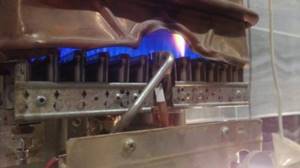
In order for your gas boiler to please you with economical fuel consumption and long-term operation without failures, it is necessary to take care of it in a timely manner. It is especially important to pay attention to the elements of the burner device, since a lot of soot and soot accumulate on them. Many unit users are interested in how to clean the burner of a gas boiler.
Why is resin in a boiler dangerous?
Cleaning a solid fuel boiler from tar and other contaminants should be carried out regularly, and not occasionally. Otherwise, negative consequences will not be long in coming. For starters, heat transfer rates will decrease—it will take much more time to properly warm the house, and the heat will be distributed unevenly. A deposit of just a few millimeters in height reduces the boiler power by 30%, which entails an increase in raw material consumption and financial costs for heating.
A solid fuel boiler, inside of which a thick layer of soot, tar and tar has formed, will not last long. First of all, its main elements, which are assigned heating functions, will fail. In addition, oily deposits that accumulate in large quantities have corrosive properties, which also shortens the life of the heating device. The risk of smoke in the boiler room also increases due to a decrease or complete absence of draft in a polluted combustion chamber.

Why do you need to clean the burner?
The burner of a gas boiler is one of the most important components. The fuel is supplied to the burner and mixed with air, then this mixture burns and the heat is transferred to the heat exchanger. During the combustion process, soot and soot are formed, which settle on the burner elements. In order for the gas combustion process to occur without failures, it is necessary to keep the components of the burner device clean. If this is not done in time, the consequences may be as follows:
- increased fuel and electricity consumption;
- the boiler does not reach the required temperature;
- burner extinguishment;
- the appearance of the smell of carbon monoxide in the room.

If such problems occur, you must clean the burner immediately. The elements of this device that are subject to maintenance are:
What to clean: a little theory
Despite some design features of boilers from different manufacturers, they have the same operating principle. Obtaining energy from gas combustion and transferring it to the coolant of the heating system and for heating water (DHW). In practice, the combustion diagram looks like this:
- Based on a signal from the sensors of the automation system, the supply valve opens, and gas begins to flow through the filter into the burner of the combustion chamber.
- At the exit from the burner, the mixture of gas and air is ignited by a constantly operating igniter.
- The gas burned in the combustion chamber heats the coolant circulating inside the heat exchanger.
- Combustion products from the boiler are removed into the chimney by a fan.
Thus, it is clear that the main contaminants during boiler operation will accumulate on the walls of the combustion chamber, on the burner and igniter nozzle, on the surface of the heat exchanger and in the chimney duct. These elements must be cleaned first.
How to clean the burner?
Before cleaning the burner of a gas boiler, it is necessary to turn off the gas supply. Now you can proceed to dismantling the burner device. This process involves the following sequence of actions:
- Disconnect the wire that connects the burner to the ignition button.
- Disconnect the thermocouple clamp and remove it.
- Mark with a felt-tip pen the depth of the nozzle's entry into the burner, so that later you can place it in the same position.
- Unscrew the nut that connects the valve tube to the burner. The ignition electrode is disconnected in the same way.
- Using a screwdriver, unscrew the nuts that secure the burner.
Now you need to remove the nozzle from the burner device. This is done by unscrewing the screw that fixes the insertion distance of the nozzle. Now you can move on to cleaning.
Note! There is a gasket under the burner, which should be changed periodically, as it becomes unusable during operation.
The main burner device is cleaned with a brush and a stiff brush. After the carbon deposits have been removed, you need to blow out the holes with a vacuum cleaner.
Carbon deposits from the burner nozzles are cleaned with a brush, and the holes are cleaned with wire or a needle of a smaller diameter. Do not enlarge the existing holes in the nozzles, otherwise this will negatively affect the operation of the gas boiler.
If there is a lot of soot and soot and it is not possible to clean the burner with soda alone, you can resort to the help of special chemical reagents. However, they should be used very carefully, since aggressive substances negatively affect the metal surfaces of gas boiler parts.

After cleaning is completed, all elements are returned to their place in the reverse order.
Cleaning the burner pilot
A clear sign that the gas burner igniter is dirty is a yellow tint to the flame. A working element produces a cone-shaped flame of a blue hue. How to clean the igniter of a gas boiler? It is cleaned as follows:
- the supply of fuel to the unit is blocked;
- the igniter is unscrewed;
- the element is cleaned with a metal brush;
- the igniter is blown;
- the part is installed in place.
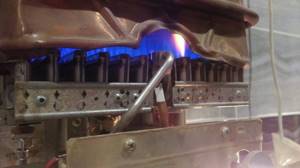
Thus, the answer to the question of how to clean the igniter of a gas boiler yourself is quite simple.
Gas filter
There may be debris in the centralized gas line, so experts recommend installing a filter on the fuel inlets of their units.
If your boiler has a gas filter, it also needs to be cleaned after the end of the heating season or before it begins. The performance of the burner device depends on the correct functioning of this part. Filter models differ from each other in the type of filter material - it can be a mesh or a hair composition. If it is not possible to clean the filter, it must be replaced with a new one.
Cleanable nodes
Gas boiler installation. (Click to enlarge)
This type of equipment contains the following components that need to be cleaned periodically:
- igniter;
- burner with nozzles;
- gas filter;
- heat exchanger;
- firebox;
- chimney.
It is worth noting that cleaning each component of a gas boiler has its own specifics, which we will dwell on in more detail.
Igniter
When the igniter is functioning normally, its flame should look like a cone with a blue tint. If the flame turns yellowish, this means that the burner is dirty.
The cleaning procedure occurs in the following sequence:
- shut off the gas supply to the boiler;
- unscrew the igniter;
- Clean thoroughly using a wire brush;
- perform purging;
- Reinstall the cleaned igniter.
Burner with nozzles
This part is the main one in the design of wall-mounted and floor-standing gas boilers, since it is intended directly for supplying fuel.
The sequence for cleaning the burner with nozzles is as follows:
- the gas supply valve closes;
- the burner is removed from its installation location;
- the location of the nozzle is noted, and then it is carefully unscrewed;
- You need to carefully clean the nozzle with a brush;
- the burner is cleaned with a brush, and its hole is purged using available pumping equipment;
- the nozzle is inserted into the burner according to the mark;
- the burner is installed in place.
Gas filter
This device is designed to purify incoming gas from various types of contaminants and impurities.
Therefore, it is very important to regularly clean the filter from accumulated clogging.
Heat exchanger
It is worth knowing that the main purpose of the heat exchanger of a double-circuit boiler is how much water will be heated and at what speed.
It is also necessary to understand that this element of the boiler unit can become clogged both inside and outside.
The outer part of the heat exchanger becomes contaminated with soot, which negatively affects its functioning. This boiler unit can be cleaned of soot mechanically, in other words, cleaning is done with your own hands.
To do this you will need the following set of tools:
- scrapers;
- metal brush;
- various shapes of brushes;
- power tool with cleaning attachments.
The cleaning procedure is as follows:
- gas supply and power supply from the boiler is turned off;
- the heat exchanger is carefully removed;
- cleaning is carried out using convenient tools;
- the device is installed again in its place.
As a result, the throughput of the heat exchanger decreases, which generally affects the functioning of the entire gas boiler. The most optimal way to clean the inside is to flush the gas boiler heat exchanger using chemicals.
In some cases, contamination causes equipment to fade. You can read about other causes of flame problems here: https://teplo.guru/kotly/gazovye/chto-delat-esli-tuhnet.html
Among the reagents that are used to clean the internal walls, the following products can be distinguished:
- adipic acid;
- sulfamic acid solution;
- special gel.
The booster consists of the following elements:
- circulation pump;
- reagent container;
- electric heater.
The principle of cleaning the heat exchanger using a flushing device such as a booster is as follows:
- to improve cleaning properties, the reagent is heated in a container;
- Using a pump, the solution is supplied under pressure directly to the heat exchanger.
As a result of the circulation of the chemical, the scale lags behind the internal walls and comes out along with the waste solution.
Prerequisites for the cleansing procedure
It must be promptly implemented when the boiler:
- It begins to weakly heat the room.
- Consumes a lot of electricity and gas.
- It works in such a way that a burning smell appears in the room.
As a rule, such failures are caused by blockages. And it is necessary to thoroughly clean all the important components of the boiler, and especially the burner.
These elements include: igniter, filters, combustion chamber, heat exchanger and chimney.
Cleansing should be done 1-2 times a year. This will be the key to safe and reliable operation of the equipment.
How to proceed with models of certain brands is shown below.
Rules of care
To avoid frequent breakdowns of the gas boiler, we advise you to adhere to the following rules for its care:
- Try to keep the room where the boiler is installed always dry. Products made of steel or cast iron begin to rust when exposed to high humidity.
- Dirt and dust heavily clog the parts of the product. Try to do dusty work away from the boiler and clean up often.
- Carry out maintenance of the unit at least once a year. If this is not done, the working life of the product is significantly reduced.
Working with AOGV
It begins when the gas supply is blocked - the corresponding valve closes. And this is a general principle for similar work with any boilers and columns.
How to clean the burner of an AOGV gas boiler? After shutting off the gas, this element is removed from its position. The burner has a nozzle. It is carefully unscrewed and carefully cleaned with a brush. The burner itself is cleaned by blowing using a special pump.
Then the nozzle and burner are returned to their place.
These are general criteria. And the details are presented on the next two models.
First. AOGV 11.6-3. This is a reliable and practical device.
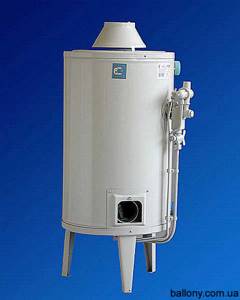
But after a certain period of operation, it is thoroughly cleaned. The process goes like this:
- The burner block is removed. To do this, the pan of the apparatus is rotated, and three tubes are disconnected from the automation unit: contact, gas and thermocouples.
- Carefully unscrew the nuts located on the fittings of the automation mechanism.
- The paronite gasket on the main gas pipe is removed and its conditions are studied. If it is damaged, it needs to be replaced.
- The designated pallet is removed through the groove, which is as close as possible to the tubes. The casing is also pulled out along with it. When fixing the lower part of the tray, point it towards you and remove the remaining holders (two pieces) from the engagement.
- This entire assembly falls to the floor.
- The main burner is examined and cleaned. The igniter nozzle is inspected.
- The wick and thermocouple are unscrewed.
- The box-shaped casing is separated from the pilot burner. This clears the way to the nozzle. If it is brass and there is plaque on it, it can be removed with fine-grained sandpaper.
- Cleaning the nozzle. To do this, thin copper wire and a blowing method under high pressure are used. The second action is carried out by a special pump on the side where the tube is connected to the tee.
- The same sandpaper is used to very carefully clean the bend of the thermocouple tube.
After this work, all the parts are assembled using the reverse algorithm. Smoothly, avoiding distortions, lift the entire block. The burner should be inside the housing, and the igniter and thermocouple should not touch the casing flange.
From the side of the tubes, the entire assembly should be tilted towards itself with a slight downward slope. The opposite side of the tray should rise.
Then feed it forward and simultaneously put on a pair of distant holds. They should be on the casing flange. The nearest hook goes to a cut groove. After it enters there, the entire pallet rotates in the opposite direction to the clockwise direction. The gas pipe should be positioned only under its branch pipe of the automation unit.
Next, it is tested how correctly the gaskets fit, and all the tubes are returned to their places. The wrench tightens the nuts on two tubes: the igniter and the gas tube.
Before reassembling the thermocouple tube, its contact areas are carefully but carefully cleaned. The nut here is tightened with your fingers.
The final stage is to check the tightness of all connections for potential leaks. If they are absent, the boiler turns on. If available, these places are covered with sealant, the nuts are tightened.
The second model is AOGV-23.2-1 Zhukovsky.
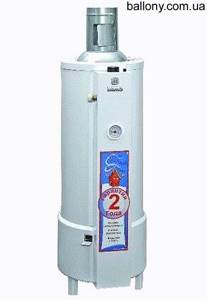
It works like this:
- The nut is unscrewed so that the gas pipe passes through.
- The angle, igniter and thermocouple are unscrewed.
- All burners in the set stretch outward and extend to the side towards the user. If there are difficulties with their movement, loosen and unscrew the studs with pliers. Clean all jets and other components.
- Disassembly of burners. To do this, unscrew 4 pins on both sides.
- The plates with slots are removed from the top of the burners, then the springs. All parts are thoroughly cleaned.
- Reassemble all elements in reverse order.
In this work, you need to be extremely careful with these plates, since they are quite fragile.
After reassembly, a leak test is carried out to examine how tightly the burners adhere to the body.
We pay attention to the firebox and chimney duct
Natural gas differs from solid and liquid fuels in that it is a pure fuel product. However, not so much that there are no combustion products, which during the operation of the boiler accumulate on the inner surface of the combustion part and inside the chimney duct.
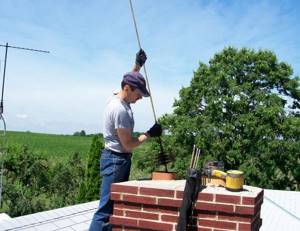
There are many devices that are used to clean chimney ducts from soot: these are brushes, brushes of various configurations and sizes. You can buy them in stores or take old brushes intended for household needs.
Individual heating of an apartment, obtained using a gas boiler, is a convenient and necessary thing. You stop depending on utilities, gaining access to hot water at any convenient time. The only disadvantage of this option is the high cost of repairs required when the system is clogged. How to clean a home gas boiler at home and what needs to be taken into account will be discussed below.
The situation with Zhytomyr
This brand is famous for its devices with piezo ignition. For an example of burner cleaning, the Zhytomyr 3 model, equipped with EURO SIT technology, is used.
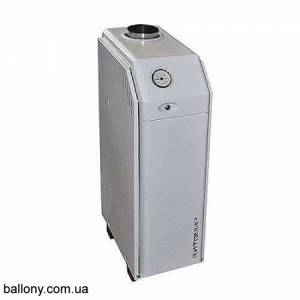
The following list of tools is required for the operation:
- Screwdriver. A flat tip is required.
- Open-end wrenches.
- A regular brush and its analogues for cleaning metal products.
- Yorshik.
After blocking the gas with a key, remove the screw securing the boiler door. It is removed entirely. This way the core of the unit becomes open.
The main burner is concentrated in its lower zone. To remove it and subsequently clean it, you need:
- Disconnect the cable from which the piezoelectric element and electric ignition operate.
- Use a key to remove the thermocouple and its clamp from the valve.
- Mark with a marker the distance of immersion of the nozzle into the burner itself. This will make it easier to return it to the correct position.
- Unscrew the nut securing the valve to the burner. Communication goes through a copper tube.
- Carry out the same manipulations with the ignition electrode.
- Using a screwdriver, remove the two fixing nuts of the other burner (pilot). There is a gasket underneath. If it is damaged or deformed, replace it.
- Remove the nozzle from the burner. If the process is difficult, gently tap around this part with a key.
To dismantle the main burner, the screw connecting it to the boiler body is released. Then it is removed. To do this, you need to grab its lower part and the copper tube and sharply pull it out of the valve.
The screw that fixes the insertion distance of the nozzle part is loosened.
For the cleaning itself, a brush and a brush are used. Carbon deposits are carefully removed.

A vacuum cleaner is used to clean the holes. All work affects both external and internal components.
This algorithm is also suitable for the procedure with the burner of the Dani AOGV series devices, for example -11.5; 23.2 and 29.
You can do the same with many similar units: Aton AOGV 16-EM, ZhMZ-AOGV 17, etc.
The injectors also need to be cleaned. Carbon deposits from the top side are removed with a brush. A wire or thin needle is used to clean the holes.
After this, all the parts are assembled using the reverse algorithm.
Disassembling and removing soot from the inner surface of the boiler
In order to clean the entire system at home, you will need the following tools:
- screwdriver;
- metal brushes (soft and for metal);
- brush;
- open-end wrenches;
- rags or any cotton fabric.
- Turn off the gas.
- Remove the boiler door and disconnect the wire leading to the piezoelectric element.
- Unscrew the thermocouple, ignition electrode and pilot burner tube one after another.
- Replace with a new gasket under the pilot burner.
- Remove the nozzle, copper tube, burner.
- Carefully remove the thermometer sleeve, and then remove the boiler lid along with the insulating sheet.
- Disconnect the terminals from the traction sensor and remove the gas duct.
After removing all the parts, you need to:
- clean with a brush and metal brushes.
- The channels should be blown out with a vacuum cleaner.
- Particular attention should be paid to the burner, since the internal channel can be easily damaged; it must be wiped carefully.
Wood boilers are often used for heating in homes. And only a few people think about what kind of firewood they should choose for kindling. Usually they use everything they have. Firewood containing resin causes particular harm to chimneys. It settles on the walls of the boiler and the chimney pipe. Mechanical cleaning is required. In this case, the chimney must be cleaned from the roof to remove any remaining tar and soot, so that combustion residues will be easier to remove from the inside. Observe safety precautions!
Question about Danko
This brand has models with different automatic systems “Eurosit” and “Kare”. Below is an example of working with the second option on the Danko 24 model.
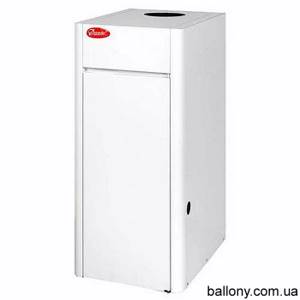
- Removing the cover. The screws on the back and front are unscrewed, two at a time.
- The American unscrews.
- The two nuts that secure the burner are unscrewed.
- The contact terminals are removed.
- The clamp is removed. The thermocouple is pulled out.
- The burner block is removed.
- Cleaning burners. Surfaces are cleaned with a brush or toothbrush. Holes - with a vacuum cleaner.
- Reassembly.
- Leak test.
The mechanisms of Ross boilers from the “Lux” series, where tubular burners are arranged, are disassembled using a similar principle.


